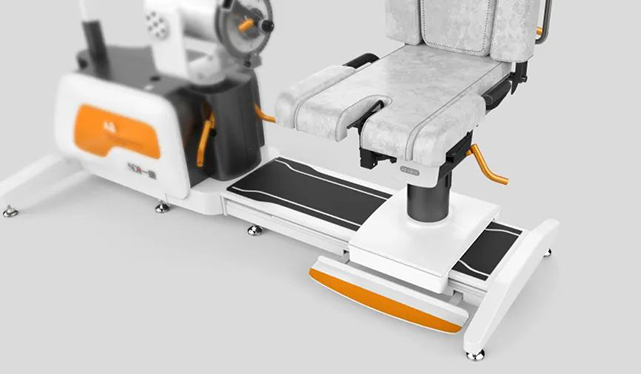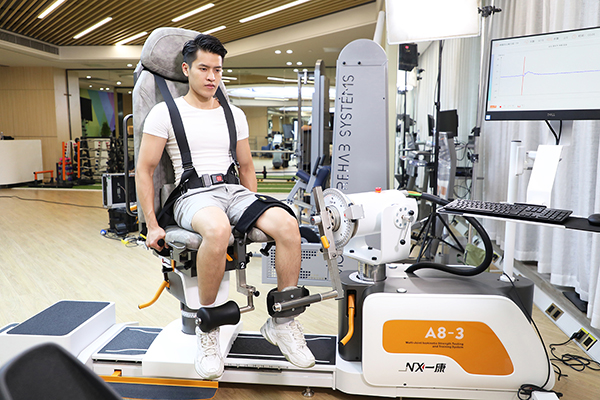The “Isokinetic Muscle Strength Assessment and Training System” addresses the relative subjectivity issues of previous muscle strength assessment and treatment methods, offering improved objectivity, safety, and repeatability. It is currently widely used in orthopedic rehabilitation, neurological rehabilitation, sports medicine, and geriatric rehabilitation.
Isokinetic exercise maintains a relatively stable movement speed without acceleration, providing resistance that is tailored to the muscle’s maximum capacity based on factors such as muscle strength, muscle length, lever arm length, pain, and fatigue. It not only minimizes the risk of muscle strain but also maximizes muscle strength training.
The main roles of isokinetic technology in various aspects include:
In rehabilitation assessment:
- Evaluating the extent of joint, muscle, or nerve damage.
- Establishing baseline values on the healthy side for comparison with the expected outcomes of rehabilitation treatment on the affected side.
- Assessing the effectiveness of rehabilitation treatment plans, monitoring the rehabilitation process in real-time, and making timely adjustments to the treatment plan.
In rehabilitation training:
- Simultaneously training the agonist and antagonist muscles to produce muscle torque at any angle, thereby improving muscle strength.
- Improving accessory structures and neuromuscular function, promoting joint fluid circulation, relieving pain, and facilitating joint oxygenation and nutrition.
- Enhancing blood circulation, promoting the resolution of aseptic inflammation.
- Enhancing joint stability, improving motor control, and more.
In neurological rehabilitation:
- The repetitive sensory stimulation and repetitive movements of isokinetic exercise stimulate the nervous system to generate new adaptations.
- Facilitating the gradual restoration of the brain’s control over paralyzed muscles and promoting the recovery of neuromuscular function.
- Isokinetic strength training has a significant effect on improving walking and balance abilities in stroke-hemiplegic patients and facilitating lower limb function recovery. It improves the patient’s prognosis and has excellent safety.
In disease prognosis:
It improves conditions such as patellar fractures, patellar chondromalacia, post-total knee arthroplasty, post-knee arthroscopy meniscus injuries, traumatic knee joint stiffness, and more.
Apart from treating diseases, isokinetic exercise has other applications:
In addition to assisting clinical diagnosis and treatment, isokinetic exercise also has a significant role in training for athletes and fitness enthusiasts.
The system accurately assesses an athlete’s limb muscle strength and compares the strength between the left and right sides. When an athlete wants to enhance the strength of a specific muscle, isokinetic exercise provides various training programs to improve muscle strength. Moreover, it can also adapt the training programs according to the athlete’s changing muscle strength, offering customized training plans.
For inquiries, please feel free to contact us at:
WhatsApp: +8618998319069
Email: yikangexporttrade@163.com
READ MORE: The Application of Isokinetic Technology in Clinical Practice
Post time: Jan-19-2024








